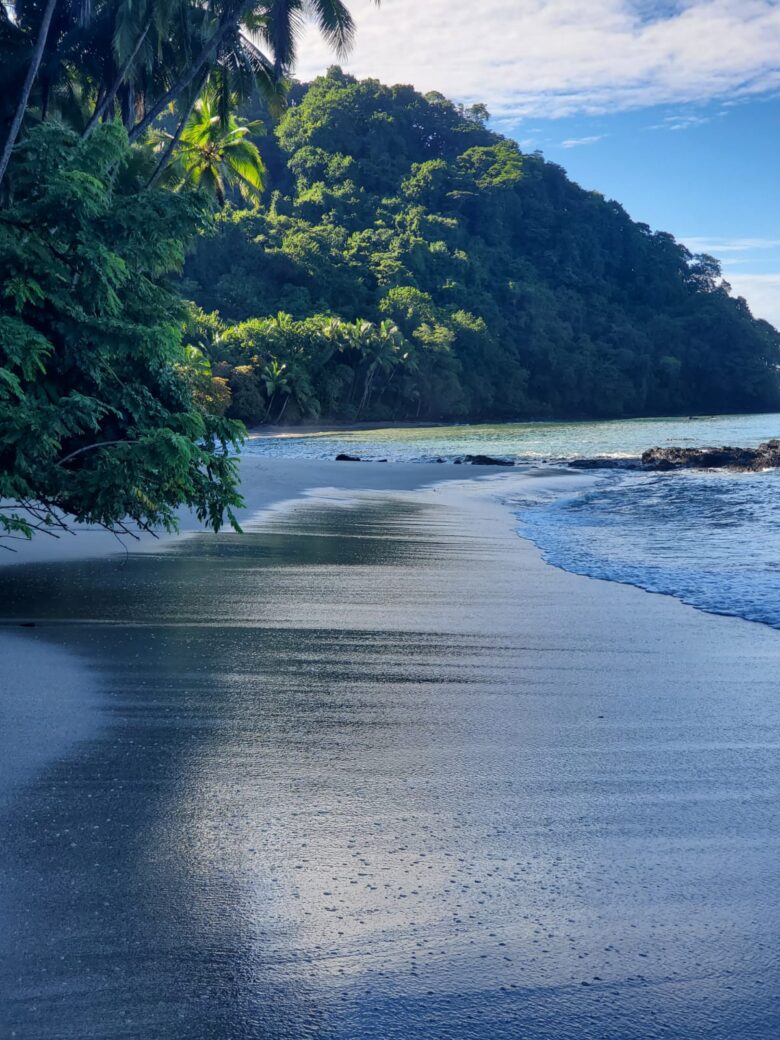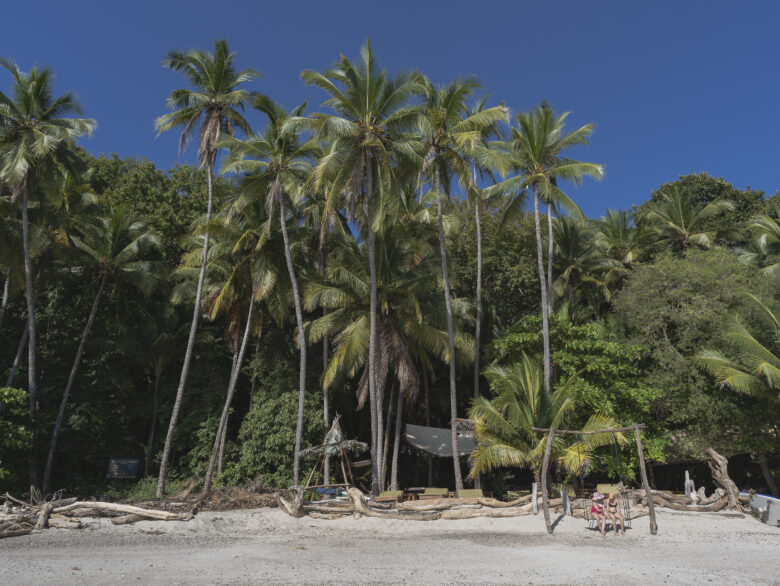When you hear the word “camping,” you might think of bugs, wet tents, or sleeping on hard ground. But there’s something better now—glamping. It means glamorous camping. And when you do it by the beach, it becomes a magical dream. That dream comes true with Costa Rica beachfront glamping.
What Is Beachfront Glamping in Costa Rica?
Beachfront glamping means staying in a fancy tent or nature lodge just a few steps from the ocean. You get the fun of being close to nature, but with soft beds, clean bathrooms, and even air fans or hot showers.
In Costa Rica beachfront glamping, you fall asleep to the sound of the waves and wake up with the sunrise. It’s not a hotel. It’s not camping. It’s better than both.
Why Costa Rica Is Perfect for Beach Glamping
Costa Rica has over 800 miles of coast. The Pacific and Caribbean sides both have palm-lined beaches, warm water, and fresh sea air. It’s a country full of beauty, with forests, monkeys, and birds close to the ocean.
Many beach glamping spots are on the Nicoya Peninsula, like Santa Teresa, Nosara, and Tamarindo. These places are loved by surfers, yoga lovers, and people who want peace.
On the south side, Osa Peninsula and Corcovado National Park offer wild, untouched nature. Here, you can glamp by the jungle and the sea at the same time.
What Makes Glamping Eco-Friendly?
Most glamping sites care about nature. They use solar energy, compost toilets, and recycle. The tents are made with safe, low-impact materials. These places are often built to protect the land and not harm trees, animals, or water.
Many Costa Rica beachfront glamping spots also support sustainable tourism. They hire locals, serve local organic food, and teach guests how to travel in a green way.
What To Expect at a Beachfront Glamping Site
You won’t be roughing it. Glamping tents may look like safari tents, yurts, or even small wood cabins. Inside, you’ll find comfy beds with clean sheets, chairs, and even small fridges.
The view? You might be looking right at the ocean. Some glamping tents come with private decks where you can enjoy your morning coffee as the waves roll in.
At night, there are often candles or small lights that give a warm glow. You might hear frogs, crickets, and the rustle of palm trees. It’s peaceful, safe, and beautiful.
Is Beachfront Glamping Safe in Costa Rica?
Yes, it is safe. Most glamping sites have security, quiet zones, and helpful staff. You’re not alone in the jungle—you’re in a place made for comfort and safety. Just bring bug spray, sunscreen, and your smile.
Costa Rica Beachfront Glamping for Couples and Families
This kind of trip is great for all kinds of travelers. Couples can enjoy romantic nights under the stars. Some sites even offer private outdoor showers or beach dinners.
Families love glamping too. Kids enjoy running on the beach, spotting animals, and sleeping in a cozy tent. Parents get to relax while feeling close to nature.
When Is the Best Time to Go Glamping?
The best time is from December to April, when it’s dry and sunny. This is also the busiest season, so book early.
From May to November, it’s green season. You may get some rain, but fewer people and lower prices. Plus, the jungle looks extra lush.
Glamping vs. Hotel – What’s the Difference?
Hotels are buildings. Glamping is nature. In a hotel, you stay behind walls. In glamping, you feel the breeze, hear the waves, and smell the trees.
Hotels can be busy and crowded. Glamping is calm and peaceful. You get your own space. You connect with the Earth.
That’s why more people are picking Costa Rica beachfront glamping instead of hotels.
How Much Does It Cost?
Prices depend on where and when. A simple beachfront tent might cost $70–$100 per night. A luxury one with a view, meals, and yoga could cost $150–$300 or more.
Some glamping resorts offer all-inclusive packages with food, tours, and transport. These are great if you want a no-stress trip.
What To Pack for Glamping on the Beach
Pack light but smart:
- Swimwear
- Loose cotton clothes
- Flip-flops or sandals
- Sunscreen and insect repellent
- Headlamp or flashlight
- Reusable water bottle
- A good book or journal
And bring your sense of wonder. Nature will take care of the rest.
Beachfront Glamping for Surfers and Nature Lovers
If you love surfing, you’ll find glamping near the waves. Places like Santa Teresa, Dominical, and Nosara are famous for surf. Some camps offer surf lessons right outside your tent.
If you love animals and nature, try glamping near a rainforest or national park. You might see toucans, iguanas, or even sea turtles.
The mix of jungle and beach is one reason people love Costa Rica beachfront glamping.
Last-Minute or Direct Booking
Some travelers book ahead, others go last-minute. Sites like playalosvivos.com offer both. You can check availability, prices, and photos all in one place.
Booking direct also means you get better deals and talk directly to the owners.
Why People Love Beach Glamping in Costa Rica
People say it changes them. It’s not just about sleep or sun. It’s about feeling free. It’s about hearing the ocean, feeling the sand, and finding peace away from screens and stress.
Some even say it helps with anxiety, sleep, and happiness. Nature heals. Glamping just gives you the space to enjoy it.
Conclusion: Try Costa Rica Beachfront Glamping for Yourself
If you want a vacation that’s different, meaningful, and relaxing, try Costa Rica beachfront glamping. It’s not just a bed on the beach—it’s an experience.
Whether you go alone, with your partner, or your family, glamping brings you close to what matters: nature, peace, and joy.
Let the ocean be your lullaby. Let the stars be your nightlight. Book your glamping adventure today and discover a new way to feel alive in Costa Rica.
Visit playalosvivos.com and explore your best Costa Rica beachfront glamping experience—nature, comfort, and adventure in one unforgettable place.


